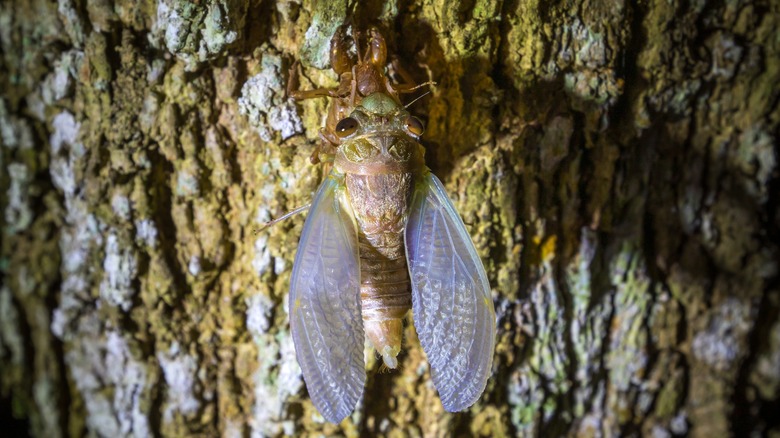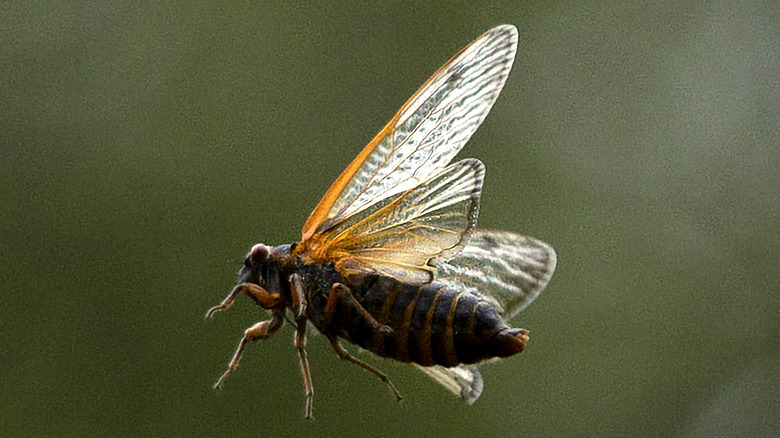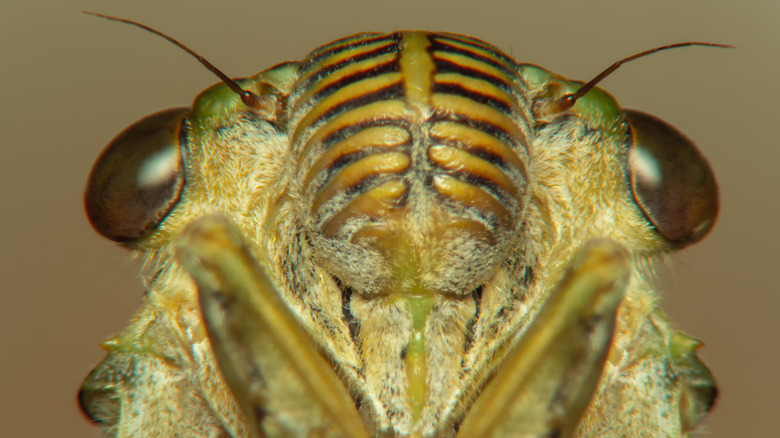What Cicadas Are Really Doing Underground For Years
Cicadas are some of planet Earth's most remarkable and mystifying little creatures. Every 13 or 17 years, these screeching little insects emerge from beneath the soil to eat, fornicate, lay eggs, and molt — only to disappear again in a sudden burst of silence for another decade-and-a-half. All that's left is a landscape stricken with their little alien-like exoskeletons (via The Nature Conservancy). It's a real-life Lazarus effect that has baffled scientists for as long as it's been observed.
While most North American species appear every summer, the "periodic cicadas," as scientists call them, are the ones that have inspired the most discourse and curiosity. The first-ever modern documentation of these types of cicadas appeared in the earliest scientific journal named Philosophical Transactions, when a visitor to the American colonies witnessed their emergence in the 1600s. Ever since then, experts have conjectured multiple theories as to what they are doing for those 13 or 17-year intervals and why they wait so long in between swarms, as Mental Floss notes.
What are they doing underground?
Let's go underground. Essentially, cicadas burrow into the soil after a harvest and sustain themselves on tree roots for years on end in order to survive. While they're certainly not active in the manner we observe them, they aren't necessarily lying dormant either. They don't have any wings during their time underground, but they do burrow tunnels to seek out tree root sap (via Britannica). In fact, this timeframe constitutes the bulk of a cicada's life, because after the four to six week period in which it appears on this side of the ground, it dies — that's just enough time for it to eat, mature, and sire offspring for the next brood.
But, why stay submerged for so long? The ability to survive underground is one thing, but to do so for 13 to 17 years seems a bit gratuitous, no? Even so, the predisposition for cicadas to hide away for such lengthy intervals does have its pragmatic benefits.
Why every 13 to 17 years?
"Consider a predator with a cycle of five years; if cicadas emerged every 15 years, each bloom would be hit by the predator. By cycling at a large prime number, cicadas minimize the number of coincidences (every 5X17, or 85 years, in this case)," Stephen Jay Gould shared in his 1977 book on the subject, "Ever Since Darwin: Reflections of Natural History," (via Mental Floss). If that sounds confusing, what it essentially means is this: By maintaining a larger window of time between reemergences that is subject to variation (13-17 years), cicadas are able to avoid the feeding patterns of certain predators.
This is the prevailing theory shared by most experts, but an alternative take on the phenomenon is that, because tree sap is not very rich in nutrients, cicada nymphs have to consume a lot of it to mature into adulthood. Development can stretch up to a handful of years, so they essentially need to spend all their time eating while buried in the soil. That way, they're physically competent enough to mate and produce offspring once they emerge (via A-Z Animals).


